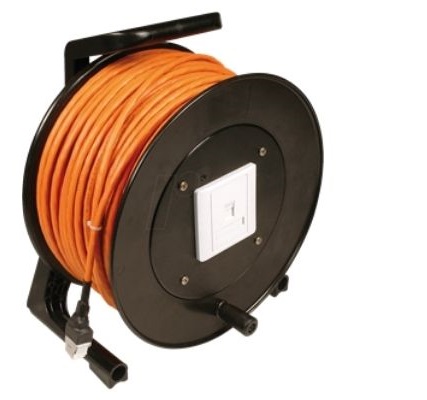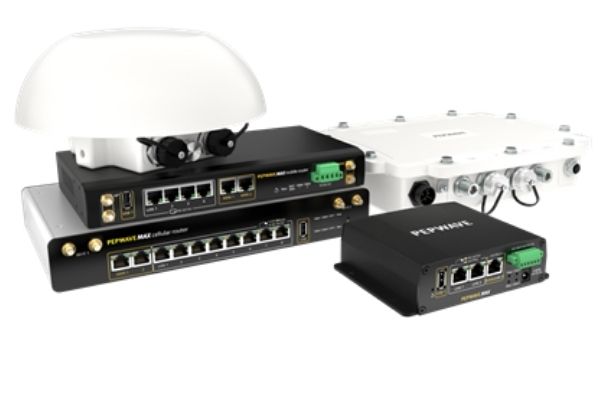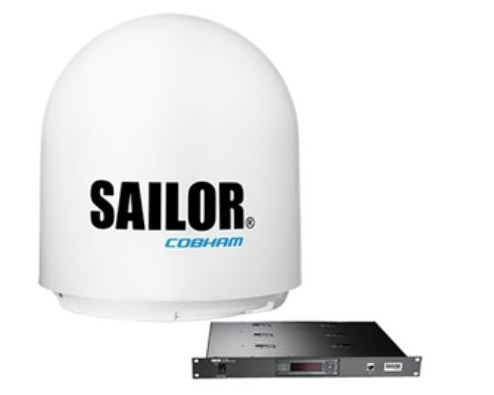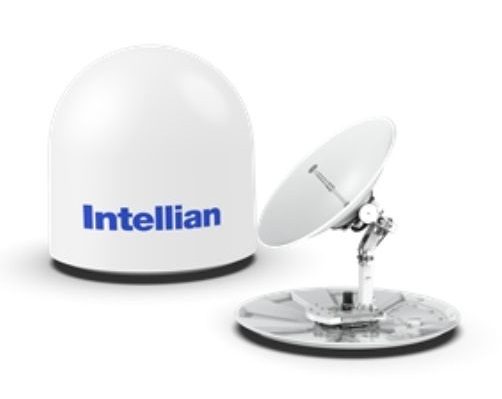Five Best Ways to Connect Your Ship to the Internet

In today's digital age, a reliable internet connection is one of the most essential things on board a superyacht, as so many systems rely upon it to function - even the treadmill is connected to the internet nowadays. With the latest technology on offer and the quality of services available in today's market, your superyacht should be pumping terra bytes of data with happy guests and crew alike. It's 2021, and finally, all of this is very much achievable as your vessel can connect to blazing fast internet speeds, making buffering a thing of the past!
So why is your ship's internet so unreliable?
In the real world, most superyachts still have inadequate performing internet systems on board with lousy, low budget VSAT connections or subpar performing cellular connectivity systems that the vessel, owner, guests and crew still suffer daily is classed an absolute necessity in today's society. It usually comes down to the following three topics: the vessel not willing to invest in the right solution; their budget steers them to choose the wrong solution for their size of the vessel; the installation hasn't been installed correctly.
In 2021 it's not acceptable for superyachts to have poor performing internet on board anymore when owners pay millions for the yacht, the guest pays a fortune to charter, and the crew who serve the vessel are away from their families.
How do ships get internet?
Your superyacht can get an internet connection in numerous ways, all of which have their upsides and downsides to their technologies. I've listed the most common ways for your vessel to connect to the internet here:
-
Shore Connection (Cable)
-
Cellular Data (3G / 4G / 5G)
-
VSAT (KA / KU / C-Band)
-
Marina WI-FI
-
Fleet Broadband (L-Band)
Other options include Iridium Certus, Thuraya and Globalstar, which use their own LEO constellation or the L band frequencies.
 1. Shore Internet Connection (hardwired)
1. Shore Internet Connection (hardwired)
You will never beat having a physical fibre connection to the shore internet connection box. From here, the boat can be connected with an internet shore cable (see picture) plugged into the ship and connected to the onboard firewall. You will be able to tap into the countries local network, where you should reach incredible speeds. The shore connection is the only time when your vessel will be physically connected to the web with low latency (the time it takes to talk to a destination and back again), not relying on radio waves to give you the best possible Internet experience providing that the marina/port has a reliable infrastructure.
Pros
-
Wired physical connection
-
Lowest latency
-
Cheapest date
Cons
-
Can't be used at sea
-
Limited to the local network capability
-
Not all connection boxes have fibre
2.1. Cellular 5G Internet Connectivity
Cellular connectivity should be the vessel's preferred choice when in cellular range to connect to the internet.
5G brings a dramatic increase in bandwidth, a significant rise in capacity, and less congestion, so no more fighting with other yachts for the same signal. 5G also means faster page loading, faster downloads with almost instant streaming. Although the 5G buzzword is so hot right now, there are still a couple of downsides:
-
Most of the marina, ports and popular destinations don't have the 5G infrastructure in place yet. However, all modern cities, ports, and marinas will inevitably adopt this technology by the end of 2022. (Port Hercules in Monaco has adapted to 5G already)
-
One caveat with 5G and the maritime world is simply down to physics. The higher the frequency, the less range the signal can travel and maintain performance.
Pros
-
Significantly cheaper data than VSAT
-
Significantly cheaper hardware than VSAT
-
Fastest wireless connection
-
More capacity than 4G
Cons
-
Limited to cellular 5G range
-
Shoreside 5G still being deployed
Tip: When purchasing a new cellular router, check to see if it's backwards compatible, meaning; you still should have the capability to connect to 5G, 4GLTEA, 4G LTE, and 3G signals. In cellular range your vessel can connect to a 5G signal and the further you travel away from the shore, you will then join to 4G LTEA, LTE, 3G; therefore, when deciding on upgrade options, this is a great way to future-proof the vessel with 5G but also take advantage of the current technologies on offer. Check out some solutions here.
 2.2. Cellular 4G Internet Connectivity
2.2. Cellular 4G Internet Connectivity
Currently, this is the most popular cellular connection onboard and in the mobile data world right now. 4G has changed the way we all connect, and 4G has bought us the convenience to our lives. Implementing this amazing wireless technology on board your vessel will not only improve the internet experiences for guest, crew and owners, but it also comes at a fraction of the cost of a VSAT airtime. Some of the most remote locations have adapted to the 4G cellular technology, and its successor, 5G, will now have to play catch up by deploying its technology hardware globally.
Pros
-
Significantly cheaper data than VSAT
-
Significantly cheaper hardware than VSAT
-
More cellular range than 5G
Cons
-
Limited to 4G cellular range
3. VSAT Internet Connection (KU, KA, C Band)
A trusty VSAT Satellite Internet connection will take you around the world and keep your vessel connected to the web at all times.
The VSAT frequencies ranges come in 3 flavours: KU, KA and C Band.
C-band - requires a larger antenna which gives the vessel a wider global coverage and this performs the best out of the three in bad weather (rain fade).
KA-band - has the fastest connection with the lowest latency connection of all 3 VSAT connections.
KU-band - caters for high demanding customers, has multiple satellites per region and can reach speeds of 100Mbps plus. Most superyachts will have a KU-band as standard.
A VSAT connection is the most costly internet connection by far. The tariff is calculated by how much bandwidth (speed) you require versus how much data you've consumed. The limitation of the VSAT connection is the speed that it takes for your data to get from A to B (latency). The anticipated LEO (Low Earth Orbit) connections will transform the high latency GEO (Geostationary Earth Orbit) performance, giving end users a snappier experience. Currently, VSAT connections range from 600ms to 1000ms verse a cellular connection of 10-300ms.
Committed information rate (CIR) - the VSAT service is usually billed per month, and users pay for a Committed Information Rate (CIR), which is a bandwidth speed guaranteed by your ISP (Internet service provider), even if their satellite network is flooded with users, they will honour the guarantee of the CIR.
Maximum information rate (MIR) - the network will also talk about the Maximum Information Rate (MIR). Typically the ISP network rents a piece of satellite real estate known as a transponder. These transponders act as a relay to transmit and receive data to and from their land-based teleports via the satellite transponder and over to the vessels VSAT antenna and vice versa.
With each vessel on a different itinerary and travelling around the globe, the ISP needs to have all regions covered. It achieves this by having numerous transponder on numerous satellites in different regions, therefore, having global coverage. The MIR is determined by what satellite your vessel is connected to and what the (ISP) other vessels are connected to. The more ships connected to the same satellite, the lower the MIR and hence less speed. See TIP 2 for the "contention ratio" explanation.
Pros
-
Almost global coverage
-
LEO technologies are looming
-
VOIP lines included generally
Cons
-
Expensive hardware and airtime
-
Spares are becoming extinct
-
Line of sight blockage (mast)
-
Bad weather affects the service
Tip 1: Make sure to check the small print on the contract! Some of the most prominent ISP's apply a "crossing clause" to limit the vessel down to unusable speeds when crossing the Atlantic or the Pacific Ocean.
Tip 2: Check with your ISP how many other vessels will share your bandwidth space, i.e. a contention ratio of 12:1 means there will be 11 other vessels all sharing the same data pool as you. The lower the contention rate, the better, so when negotiating/shopping for new deals, make sure you compare apples with apples.
4. Marina Wi-Fi
The cheapest internet option is marina Wi-Fi and for a good reason. In today's world, it just isn't cutting it when it comes to the demands of superyachts and their hunger for data. Typically a superyacht under 40m would take advantage of this as their needs are far less demanding than larger vessels.
There is a but, however….currently, I would say that 99% of marinas are still using technology from 2013, Wi-Fi 5 (802.11 ac), which works well but not in congested areas with high internet demands. Have you ever been to an airport or public place that has a full Wi-Fi signal but the internet is almost unusable? That's because the system is still using the older 802.11 ac technology. Most people reading this will have an 802.11 ac home model/router, which is fine, but when delivering the same service to a public place with hundreds of connections, 802.11 ac can't keep up. The network gets flooded with users and therefore becomes unusable.
We welcome Wi-Fi 6 (802.11ax) introduced in 2020 similarly to 5G, Wi-Fi 6 dramatically increasing the system's capacity. In layman's terms, think more lanes on the highway, which means fewer collisions and less traffic jams. Once Wi-Fi 6 is rolled out across the marinas, we would see a significant change in the end-users internet performance.
Pros
-
Cheapest internet connection
-
Easy to connect
-
Wi-Fi 6 is imminent
Cons
-
Limited to WiFi signal range
-
Poor performance
Tip: When shopping for a 5/4G router, lookout to see if the hardware also includes a WI-FI interface. That means not only will you have a 5G/4G/3G connection, and you will also be able to take advantage of Marina Wi-Fi also, all from one system! Check out some solutions here.
 5. Fleet Broadband
5. Fleet Broadband
The FBB technology developed by Inmarsat is a compact, lightweight, highly reliable backup internet source to the VSAT connection. The technology ticks all of the boxes for voice and data, but it comes at a premium price for airtime. With a global coverage service similar to the VSAT antenna, it requires a line of sight, but Inmarsat's Fleet Broadband technology uses the L-Band radio frequency. Although the FBB antenna needs a line of sight to the satellite, the service performs better than the VSAT in poor weather conditions. The FBB always-on connection guarantees the vessel to be connected to a satellite indefinitely.
Pros
-
Total global coverage
-
VOIP lines included
-
Small compact antenna
Cons
-
Extremely expensive airtime
-
Expensive hardware and airtime
-
Line of sight blockage (mast)
The take aways
Which internet connection is the fastest?
Fastest - Wired/Cellular 5G/4G
Slowest - Fleet Broadband
Which internet connection is the best all-rounder?
Best all-rounder - Cellular 5G/4G
Worst all-rounder - Wire Shore Connection/Marina Wi-Fi
Which is the most reliable internet connection?
Best connection - Wire Shore Connection
Worst connection - Marina Wi-Fi
Which is the best value internet connection?
Cheapest - Shore Connection/Marina Wi-Fi
Most expensive - VSAT
Which internet connection has the widest coverage?
Best - Fleet Broadband
Worst - Shore Connection, Marina Wi-Fi
For more information, contact us at info@yotstore.com and visit our store www.yotstore.com for all the latest onboard connectivity technology equipment.



Post your comment
You cannot post comments until you have logged in.
Login to post a commentComments
Comment by: MiME Internet - 14 Jun 2022, 11:01 (2 years ago)
Thank you for sharing such valuable and helpful information and knowledge!
No one has commented on this page yet.
RSS feed for comments on this page | RSS feed for all comments